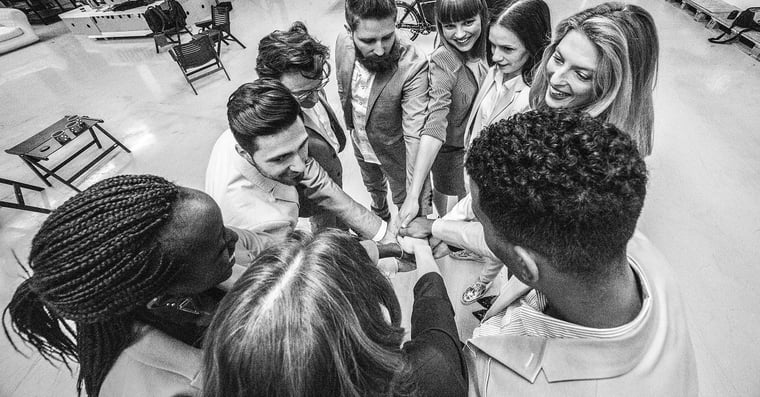You are probably familiar with the broad idea of bias: a belief that some types of people are inherently better or worse than others. Most public discussion on bias tends to focus on blatant occurrences, such as the use of slurs or statements like “women can’t be good leaders” or “we don’t hire people like you.” This type of bias is usually conscious, meaning those perpetuating it are aware that they hold those beliefs, and knowingly act on them in an egregious way.
Anti-discrimination laws are often built to deter blatant bias in the workplace. In the United States, this type of behavior is illegal when it’s directed against someone based on “race, color, religion, sex (including pregnancy, sexual orientation, or gender identity), national origin, age (40 or older), disability and genetic information (including family medical history).”
What about bias that is less obvious? Colleagues making degrading jokes. Constantly being spoken over in meetings. Your manager regularly mispronouncing your name. These are examples of “everyday bias”—small, seemingly insignificant experiences that add up to create a hostile workplace for those from marginalized groups.
Like blatant bias, everyday bias can be conscious. It simply differs in that the perpetrator is acting in a quieter or more hidden way. While there are several different terms for this type of bias, we’ll refer to it as subtle bias in this article.
Often, however, everyday bias in the workplace is unconscious, meaning that the perpetrators are not aware that their actions are problematic. Regardless of level of awareness, the impact of everyday bias is just as significant—if not more so—than blatant bias. Not only because it is cumulative, but also because it is more difficult to “prove,” leaving fewer paths for resolution.
How does subtle and unconscious bias present in the workplace?
Since humans create and manage organizations, our biases impact every facet of the workplace. Let’s look at two common ways it manifests.
Perhaps best known is the impact of bias on talent management. Similar-to-me bias is common here. This simply means we’re more likely to bond with and trust (and therefore hire and promote) those who are more like ourselves.
We’re also more likely to assume the competence and potential of those who fit our society’s stereotype of a leader, while making those who do not “fit” prove their skills many times over. This is known as the prove-it-again-bias.
For example, one recent study demonstrated bias in the workplace in a hiring experiment focused on socioeconomic class. Researchers found that just by listening to a few seconds of speech, hiring managers could accurately pinpoint the speaker’s class, and viewed those they thought were from higher classes as more competent. They were more likely to hire them, as well as give them higher salaries.
Workplace norms and culture or the unspoken rules about “the way things are done here” are also influenced by subtle and unconscious bias. For example, appearance norms of more privileged demographic groups are commonly viewed as more professional, compared to other groups. Bias may present as subtle backlash if employees don’t wear European-style suits during important meetings, if they display a religious symbol that is not from a dominant religion, or if their appearance differs from dominant gender norms.
Impacts of everyday bias
Everyday bias in the workplace, whether conscious or not, accumulates over time. At the personal level, it can cause employees from marginalized groups to feel that they don’t belong, creating a lack of psychological safety. Over time this can cause exhaustion, burnout, and health problems.
At the organizational level, it can lead to significant disparities in pay and promotion. Those who face less bias in the workplace are often better compensated, and rise more quickly through the ranks. Not because they are inherently better leaders, but because their career path is not sprinkled with the obstacles of everyday bias.
Subtle and unconscious bias also contributes to turnover. Sometimes, marginalized employees reach a point where they are no longer willing or able to tolerate bias and decide to leave instead.
Overall, everyday bias in the workplace can create environments that are experienced in radically different ways. An environment that feels comfortable, safe, and fair to employees with more privilege can be hostile and inequitable to those who face bias.
What can we do to mitigate bias?
There is no magical solution to bias. A starting point is to raise awareness, and increase transparency—especially when it comes to things like pay, promotion, and decision-making processes. This can help to identify when bias is occurring.
The next step is to build structure to reduce the impact of biases. For example, if you identified that bias is emerging during interviews for new employees, you could create a hiring scorecard that requires hiring decisions to be focused on tangible skills and experience, rather than gut feelings or likeability. This can significantly reduce similar-to-me bias, and result in a stronger talent pool.
Diversifying leadership and management can also help. For example, a study on gender bias and speaking time at academic events found that when women were in leadership positions with control over who was invited to speak, the bias was significantly reduced.
Everyday bias is a complex and nuanced topic that we have just touched the surface of here. While it is different for each organization, one thing applies to everyone: unlearning and mitigating everyday bias is a life-long journey. The good news is that even small steps can make a difference, and it’s never too late to get started.




